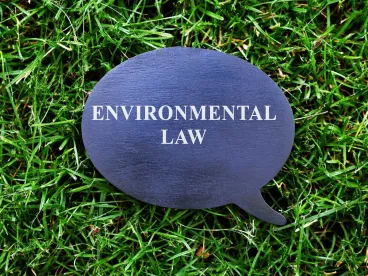Breaking News: D.C. Circuit Blows Up Conowingo Settlement
The U.S. Court of Appeals for the D.C. Circuit (D.C. Circuit) has issued a decision today vacating the Federal Energy Regulatory Commission’s (FERC) order issuing a new license for the Conowingo Hydroelectric Project on the Susquehanna River. In issuing the license, FERC adopted a settlement agreement between the licensee and the State of Maryland under which Maryland agreed to withdraw its water quality certification for the relicensing and waive certification authority under Section 401 of the Clean Water Act, conditioned on FERC adopting the terms of the settlement into the license under the Federal Power Act.
In Waterkeepers Chesapeake v. FERC, No. 21-1139 (D.C. Cir. Dec. 20, 2022), the D.C. Circuit held that under the plain language of Section 401, there are only two routes to waiver of certification authority: failure to act, or refusal to act, on a certification request. The statute does not provide that a state may issue a certification and then waive it retroactively, according to the decision.
The D.C. Circuit further rejected FERC’s argument that the court should not vacate its license order, but rather remand the case without vacatur to avoid the disruptive consequences of rescinding the license. The court asserted that vacating the license will allow completion of the licensee’s administrative and judicial challenges to the Section 401 certification, which would result either in (1) invalidation of the certification, which would require the licensee to request a new certification, or (2) validation of the certification, which would require FERC to issue a license incorporating the original certification conditions.
The D.C. Circuit’s decision raises a number of questions regarding how challenges to Section 401 certifications can be resolved, short of litigation. For example, are there circumstances under which a state could rescind a previously issued certification to facilitate a settlement? Can a state issue an amended certification reflecting the terms of a settlement agreement even though the one-year statutory period for acting on the certification request has passed? Answers to some of these questions may be forthcoming as the case plays out at FERC and in the courts.
FERC Approves Klamath Dam License Surrender
On November 17, 2022, FERC unanimously approved the surrender of the license for the Lower Klamath Project, paving the way for Klamath River Renewal Corporation (KRRC) to remove four hydroelectric dams on the Klamath River.
The Lower Klamath Project was formerly part of a 169-megawatt, eight-development hydroelectric project spanning two counties: Klamath County, Oregon, and Siskiyou County, California. The original license expired in 2006 and the project has since been operating under an annual license. Issuance of the surrender order terminated the project’s relicensing, which had been held in abeyance for a number of years.
FERC issued the surrender order subject to numerous environmental, dam safety, and other conditions. The surrender order also is contingent on KRRC and the States of California and Oregon accepting transfer of the license and title to project properties. Removal of the project facilities is expected to require 20 months and restoration and monitoring activities would last at least five additional years.
KRRC called the dam removal “the first crucial step to restor[ing] the health of the Klamath River,” strengthening the regional economy, and providing lasting environment benefits including returning the river to its free-flowing state, restoring salmon runs, and providing access to traditional foods and Tribal cultural practices. FERC anticipates it will benefit salmonid fisheries in particular, which are used for commerce, recreation, subsistence, and Tribal cultural purposes. Opponents of the surrender and dam removal raised various concerns, including loss of project reservoirs for flood control and fire protection, release downstream of sediment and toxic materials, loss of reservoir-based recreation, loss of renewable hydroelectric energy, and impacts on soil stability, groundwater well production, property values, and tax revenues. FERC will retain jurisdiction until all surrender conditions are satisfied.
Since no requests for rehearing of the surrender order have appeared on the docket, it appears no party intends to mount a challenge.
FWS Reclassifies the Northern Long-Eared Bat As an Endangered Species
On November 30, 2022, the U.S. Fish and Wildlife Service (FWS) published a final rule to reclassify the northern long-eared bat (NLEB) from threatened to endangered under the Endangered Species Act (ESA). The NLEB is a wide-ranging bat species, found in 37 states, the District of Columbia, and eight provinces in North America, that typically overwinters in caves or mines and spends the remainder of the year in forested habitats. FWS is uplisting the NLEB based on the continued impacts of white-nose syndrome, the foremost stressor affecting the species. The reclassification is scheduled to go into effect on January 30, 2023.
With the reclassification of the NLEB, there are significant modifications to the pre-existing ESA regulatory regime for the species. As an endangered species, all of the ESA Section 9 prohibitions automatically apply to the NLEB, and FWS has rescinded the Section 4(d) rule that selectively applied these prohibitions when the species was previously listed as threatened. In addition, FWS’s optional framework that streamlined Section 7 consultations for federal actions that may affect, but not cause prohibited take of, the NLEB is no longer available to project proponents. As a result, the NLEB uplisting has significant implications for both federally permitted and non-federal projects that may require Section 7 consultation or other incidental take authorization.
FWS is currently developing several mechanisms to assist in regulatory compliance following the change in NLEB classification. For example, FWS is developing an “Interim Consultation Framework” that will help ensure that projects in compliance with the pre-existing Section 4(d) rule are not delayed during the transition to the typical Section 7 consultation process. FWS is also working with other federal agencies to update and streamline re-initiation of consultations, and FWS and the U.S. Forest Service are developing a “Bat Conservation Strategy” for certain U.S. Forest Service lands. Finally, FWS has identified a non-comprehensive list of 14 activities that are “unlikely” to result in a violation of the ESA Section 9 take prohibition.
Proposed Rule Aims to Revise the Native American Graves Protection and Repatriation Act
The Department of the Interior (the Department) has published a proposed rule that seeks to revise regulations to improve implementation of the Native American Graves Protection and Repatriation Act of 1990 (NAGPRA).
NAGPRA, and the regulations that allow for its implementation, 43 C.F.R. Part 10, require consultation with Indian tribes; consultation with lineal descendants; complete inventory of persons, funerary objects, sacred objects, and objects of cultural patrimony; notification to culturally affiliated Indian tribes and Native Hawaiian organizations; and transfer of control or repatriation of the persons or objects to the tribes or organizations, unless specifically exempt under Section 10.10(c).
Congress acknowledged the legal ownership of human remains and other cultural objects by lineal descendants of Indian tribes and Native Hawaiian organizations when it enacted NAGPRA. One major purpose of the statute is to require federal agencies and museums receiving federal funds to inventory holdings of Native American human remains and funerary objects to provide accounting and summaries of cultural items.
In 1980, the Smithsonian Secretary indicated that of the 34,000 human remains on display, well over 50% were North American Indians or Alaskan Natives. Indigenous response to these numbers was the demand for repatriation of those thousands of human remains for disposition in accordance with Tribal customs and traditions. This demand was an appeal to dignity and a request for proper burial of the remains.
A second major purpose of NAGPRA is to provide greater protection for Native American burial sites and careful control over the removal of Native American human remains, funerary objects, sacred objects, and items of cultural patrimony on federal and Tribal lands. This includes archaeological investigations, unexpected discovery of culturally affiliated human remains and objects, and federally driven projects that recover or disturb culturally affiliated remains or objects.
In 2021, Congress recognized that there was a deficit in the implementation of NAGPRA. The U.S. Army Corps of Engineers and other federal agencies have failed to fully comply with NAGPRA, and the proposed rule is an attempt to revise loopholes in the existing legislation. The proposed changes to the regulations provide a roadmap for museums and federal agencies to comply with NAGPRA requirements within specific timelines. By improving NAGPRA’s consultation, disposition, and repatriation requirements, the proposed rule changes hope to clarify and improve efficiency under NAGPRA.
The Department is seeking public comment on the proposed rule and comments are due January 17, 2023. If you have any questions or need assistance with submitting comments regarding the proposed rule changes to NAGPRA please contact Laura Jones at ljones@vnf.com.
White House Officially Launches Climate and EJ Screening Tool
On November 22, the White House Council on Environmental Quality (CEQ) released the Version 1.0 of its Climate and Economic Justice Screening Tool, an interactive geospatial mapping tool identifying communities weighed down by various socioeconomic and environmental factors. According to the White House, the Screening Tool is key in the implementation of President Biden’s Justice40 Initiative, which is the administration’s effort to ensure that disadvantaged communities receive 40% of the overall benefits of federal climate, clean energy, clean water, and other investments.
The Screening Tool helps the federal government identify disadvantaged communities that would benefit greatly from federal investments in climate, clean energy and energy efficiency, clean transit, affordable and sustainable housing, remediation efforts and clean water infrastructure, among other areas. To date, the Tool has identified 27,251 communities as disadvantaged or partially disadvantaged, defined as either (1) belonging in a census tract that satisfies the requirements of at least one of the Screening Tool’s categories of burden and their corresponding economic indicators, or (2) are on the lands of a federally recognized Tribe.
Notably, the Screening Tool does not use racial demographic data as an indicator to help identify disadvantaged communities, even though the White House acknowledges that communities of color suffer disproportionately from climate risks and environmental burdens. The Screening Tool instead relies on an array of climate, environmental, and socioeconomic indicators to identify communities bearing a disproportionate share of burdens and risks, and suffering from underinvestment.
The recently launched Screening Tool should not be confused with EJScreen, which is an existing environmental justice mapping and screening tool that provides the U.S. Environmental Protection Agency with consistent dataset and approach for analyzing environmental and demographic indicators side by side.
The Screening Tool will likely be updated as the White House CEQ continues to gather public feedback on the Tool’s current iteration. Public feedback can be submitted on the Screening Tool’s website.
April Knight also contributed to this article.





 />i
/>i

